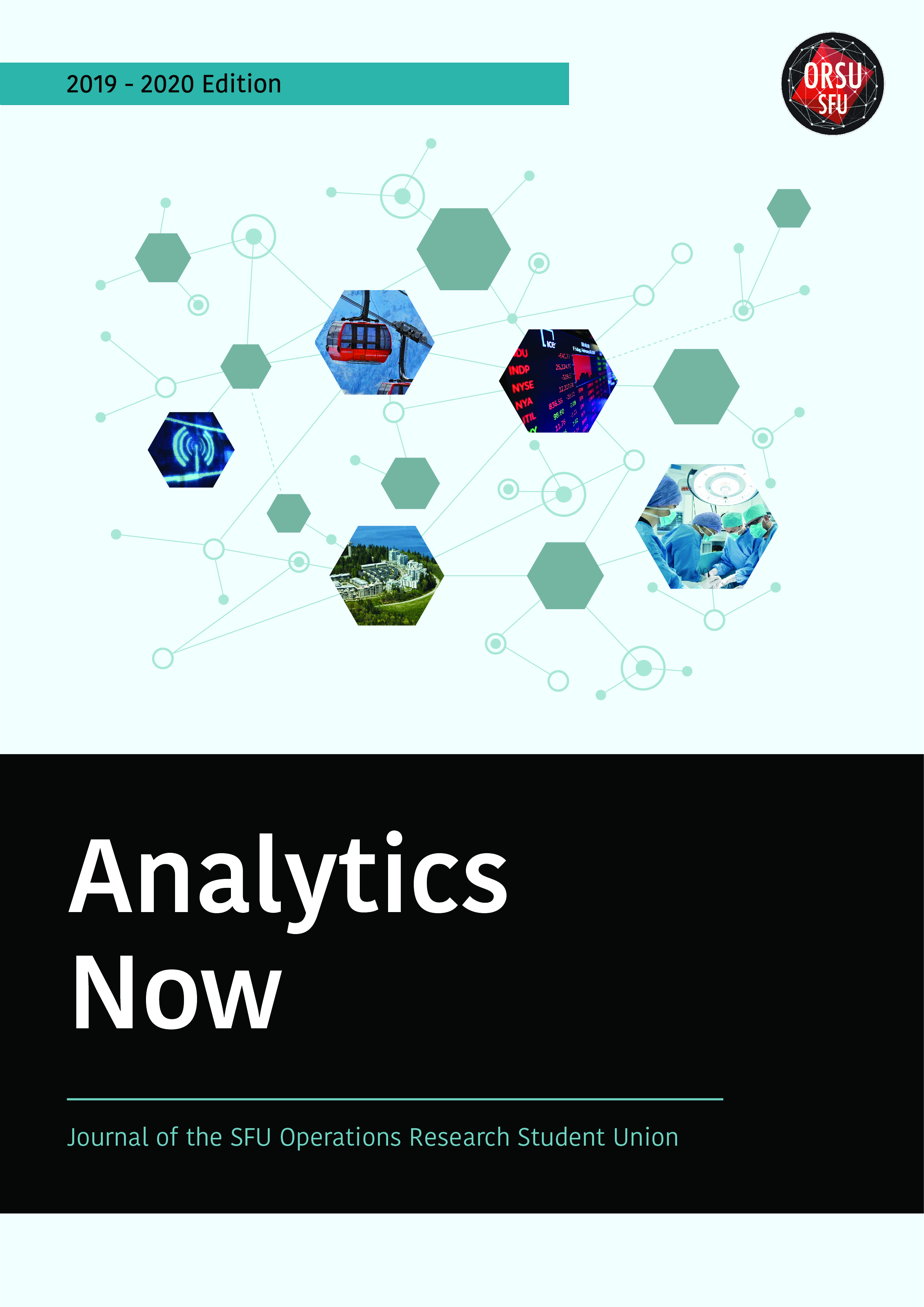Optimization Model for Network Coverage of SFU Bennett Library
Résumé
In this paper, we consider the problem of optimal WiFi router location for the case of Simon Fraser University’s Bennett Library. We have made it our goal to implement a mathematical model that takes into consideration the level of demand for WIFI on every floor of the library and allocates routers on each respective floor appropriately. Every library floor will be split into 40 sections where each contains a standardized index score between 1 and 5, which represents the demand level of that section. Demand scores will be derived from the amount of space a section has for individuals to be stationary and connected to the WIFI. In order to quantify this value for each section, we will count the number of chairs, tables, couches, and wall-plugs a section contains. Considering these demand scores for every floor, an appropriate allocation of routers can be made in an effort to maximize demand coverage. Moreover, users may set an upper or lower bound for the number of routers that are dispersed on a given floor. All intermediate steps, taken in the construction of this mathematical model, are further explained in the Model Construction section of this paper. Furthermore, our model has been only applied to floors 2, 3, 4, 5, 6 out of the seven existing floors of the library since floors 1 and 7 do not have adequate study spaces. Our results have been subjected to a certain upper-bound of commercial-grade routers, and the allocation of these routers followed a fairly common pattern through all of the floors. All routers were allocated to demand concentrated sections in order to ensure that coverage is maximized. Further insight and information are provided in the Results section of this paper.
Téléchargements
Publié-e
Numéro
Rubrique
Licence
The images, figures, and tables in the Simon Fraser University Operations Research Undergraduate Journal are not necessary those of the Simon Fraser Student Society, Operations Research Union, or the Department of Mathematics at Simon Fraser University or their respective Directors and Executives. The copyright of all contributions remains with their authors. By submitting to Analytics Now, authors acknowledge that submissions reflect original work, and that proper credit has been given to outside sources.
All material herein is Copyright 2012 by the respective authors. Permission to reprint or reproduce the material contained herein is prohibited without express written permission from the author and publisher with the exception of dissemination for non-profit, educational, academic, or informative purposes.

